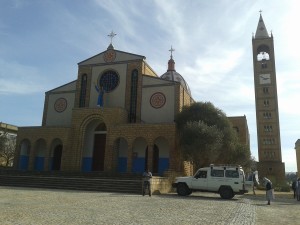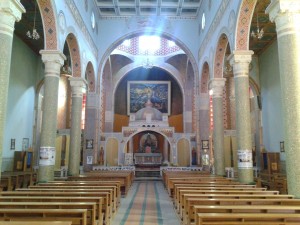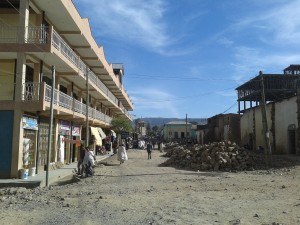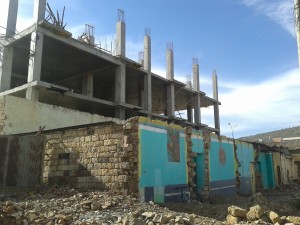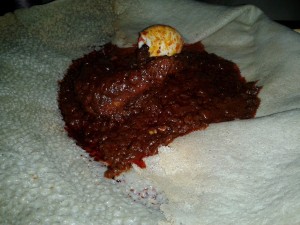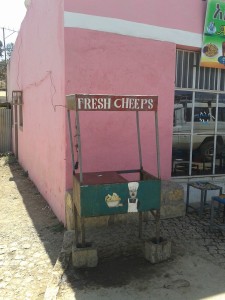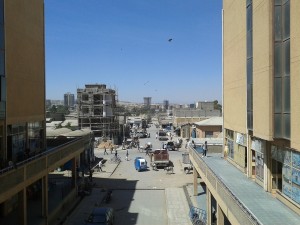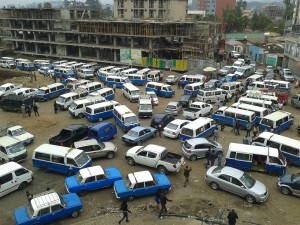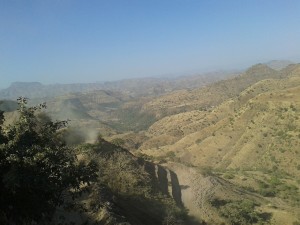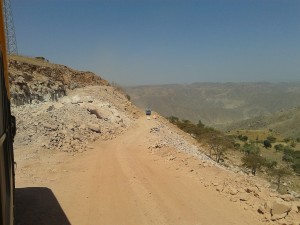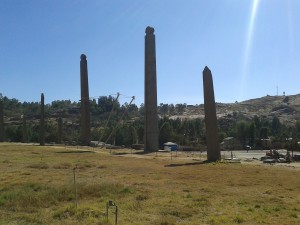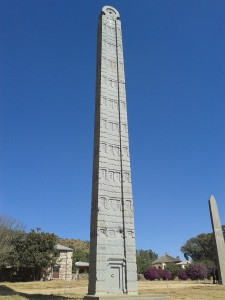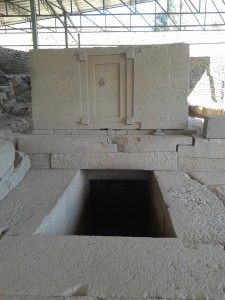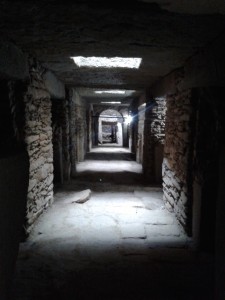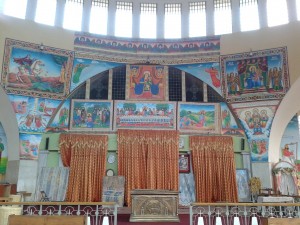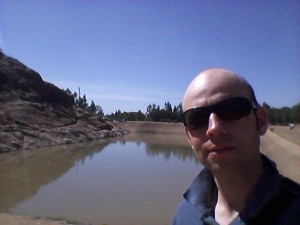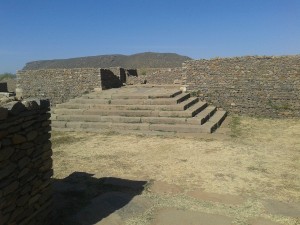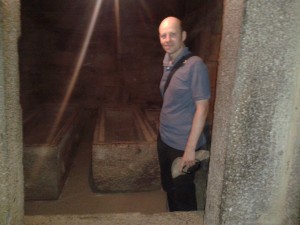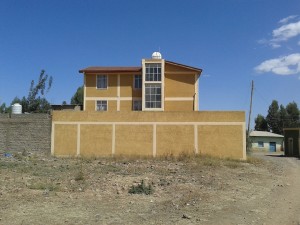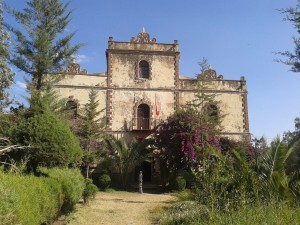Like many of the bus journeys on this trip I was once again greeted by stunning vistas across unspoilt countryside. Ancient terraces, still in use, cut into mountainsides up steep valleys, wrecked lorries and buses lying crushed a few hundred metres below where they had left the road. It occurred to me that these had been missing on the road to Axum and somehow it seemed the lack of tarmac made the drive safer – perhaps drivers are more cautious there. After a few hours driving we started our descent towards a large town. It was too soon to be Mekele and there were no other large centres of population on the route so I knew that I had successfully boarded the right bus- ahead of me was Adigrat It would have been a great to stop and take a few pictures, but one of the trials of public transport means that that is not an option – for the driver this was work not a guided tour, Mekele beckoned. Once down in the town I alighted and began to soak in the atmosphere watching the bus fade into the distance.
Adigrat had a special draw for me. Early on in the stages of preparation for Ethiopia this was the place I was supposed to go. It seems distant history now, but I had invested a lot of time and energy in finding out about this place and its surroundings as well as investigating the local language, Tigrinya. Naturally I was extremely curious about the place. As with so many of my stops I was lucky to be able to visit a fellow volunteer and the local knowledge as always proved useful. My time in Adigrat was short, but it was enough to get a feel for the town and to visit a few places. I wandered down to the Catholic Cathedral and running into a member of the local clergy asked if I could be let into the locked building. Obliging and even providing some information about the building I entered into the tranquil calm of the church a far cry from the bustle of the Adigrat streets. It was a fairly modern building and the priest was clearly extremely proud of the ecumenical work and spoke of a recent funeral where members of a variety of denominations and religions had been in attendance together as well as a weekly ecumenical prayer session.
There is also a painting above the sanctuary which includes symbols or buildings connected to all the Abrahamic religions. One of things that Ethiopians seem to be very good at – at least publicly is religious tolerance. Most, if not all, of the countries I have visited previously could learn a thing or two on this front.
One of the things I enjoyed most about Adigrat was just walking the streets. Since the war with Eritrea this former border town has suffered economically from the border remaining closed and gives the impression of a former glory now slightly decayed. However, it is also a town under construction and perhaps has a brighter future ahead.
It was also the first place I managed to get the elusive “doro wat”. This is the famous Ethiopia chicken dish that in spite of seeing chickens everywhere and the name featuring on numerous menus no restaurant seems to have. It lived up to its reputation of being a fine dish and one that is definitely worth hunting for.
The volunteer I was staying with was, by coincidence, heading to Mekele the final place on my tour and I was fortunate enough to be able to join her in the hospital car that was taking her to the city. As the car pulled out of the city I found myself hoping to return because there was one thing I had not had time to do. When I had been doing all my research I had read about the rock churches of Tigray and one of the biggest draws when I thought I would be working in Adigrat was that I would be able to take trips out to see several of these. On this occasion I had not had enough time to do see even one. This is the one thing at the top of my Ethiopia “to do” list before I leave.
Mekele is quite the city and in many ways more developed than many of the other places I have visited in Ethiopia. Apparently this has happened over the last 20 years or so. I had no particular plans of anything I wished to see there – most of it is modern anyway, but again it was good to wander the streets and just get a feel for the place. It is also the launching point for those who wish to head out to the Danakil Depression – the hottest place on Earth (I think its claim comes from having the highest average temperature) and also to where the remains of “Lucy” were found – everyone’s great, great, great, etc., etc., grandmother; this leading to the claim of Ethiopia being the birthplace of modern humans. However, more recent discoveries have led to several other countries nearby countering this claim. The reality being that this was now so long ago we’ll never know for sure.
From Mekele I broke my land only rule and took the plane back to Addis, mainly because the bus seemed to be permanently booked for the next “x” days. I had unsuccessfully tried to get the bus from Addis to Mekele previously and then heard, while in Axum, of another volunteer unable to take the bus from Mekele to Addis for the same reason of it being booked out leading to a convoluted and difficult several days travel. It didn’t seem worth the hassle and I get a glimpse of the Afar region as the plane flew via that way. Definitely glad that I hadn’t been posted there, although it may be worth a brief, very brief, visit one day- if I have time.
Addis was Addis; the same hustle and bustle and craziness as ever. I stayed a few days before heading back south with just a brief overnight in Hawassa and then an early morning bus to Adola. There was something pleasant as the bus turned off the main highway onto the side road to Adola and began to climb up into the green hills. Yes, the north had the majestic beauty of the Simian Mountains and Nile Gorge, but it didn’t have the life of the mountains in the south. Both have their charms and the trip north was unquestionably amazing, with special thanks to all the volunteers who accommodated and helped me out. Still, it was good to be heading home.

